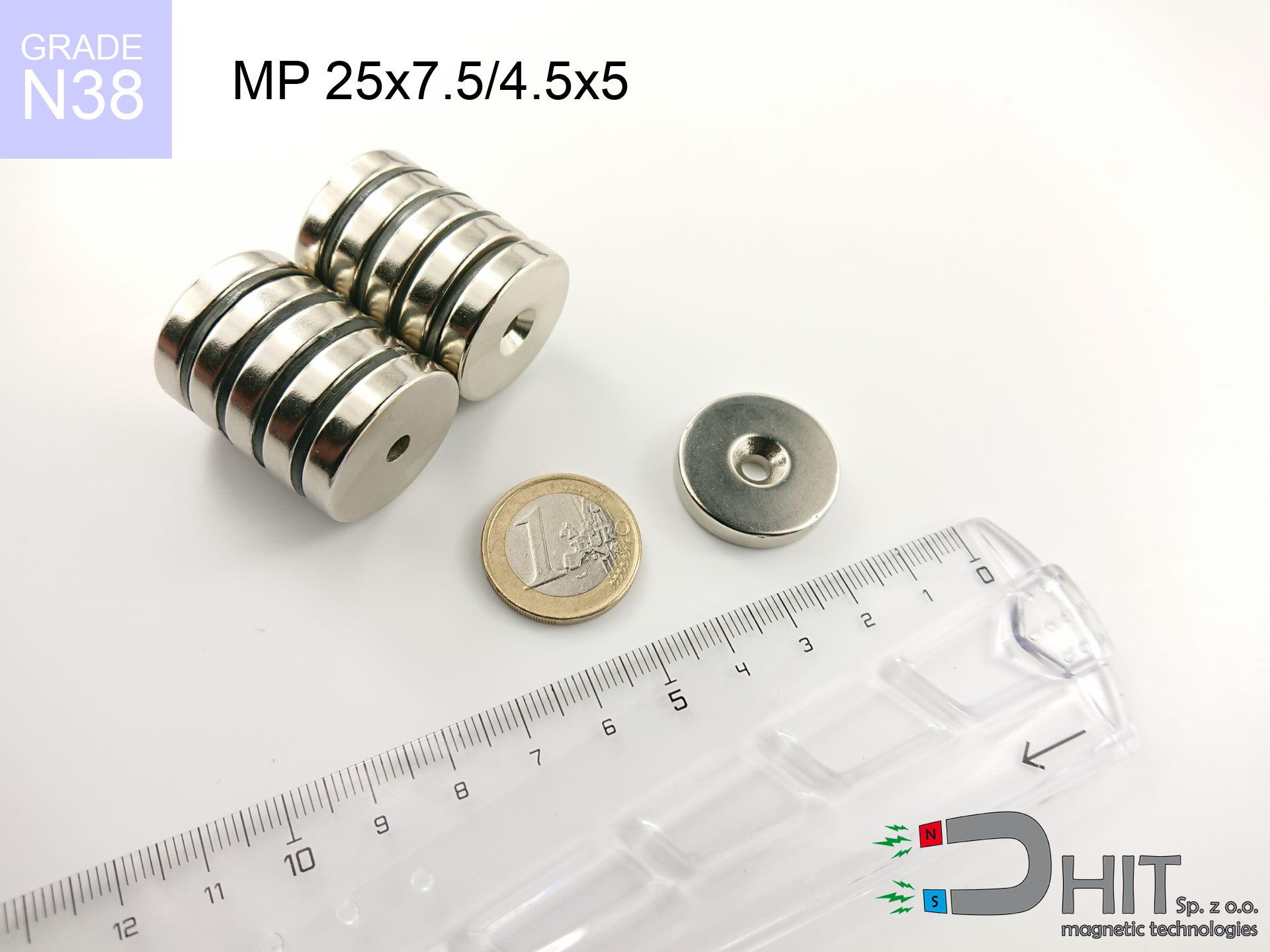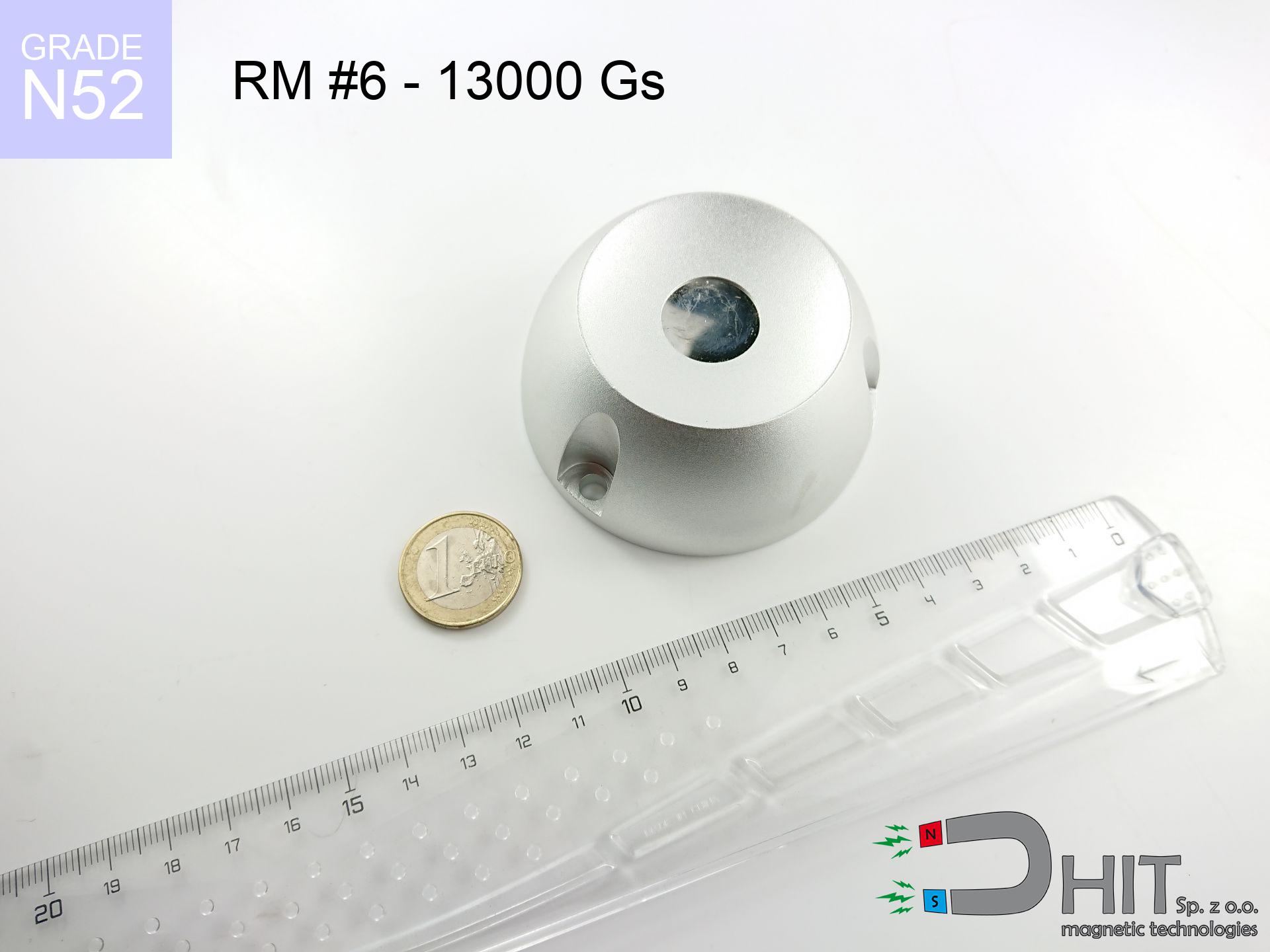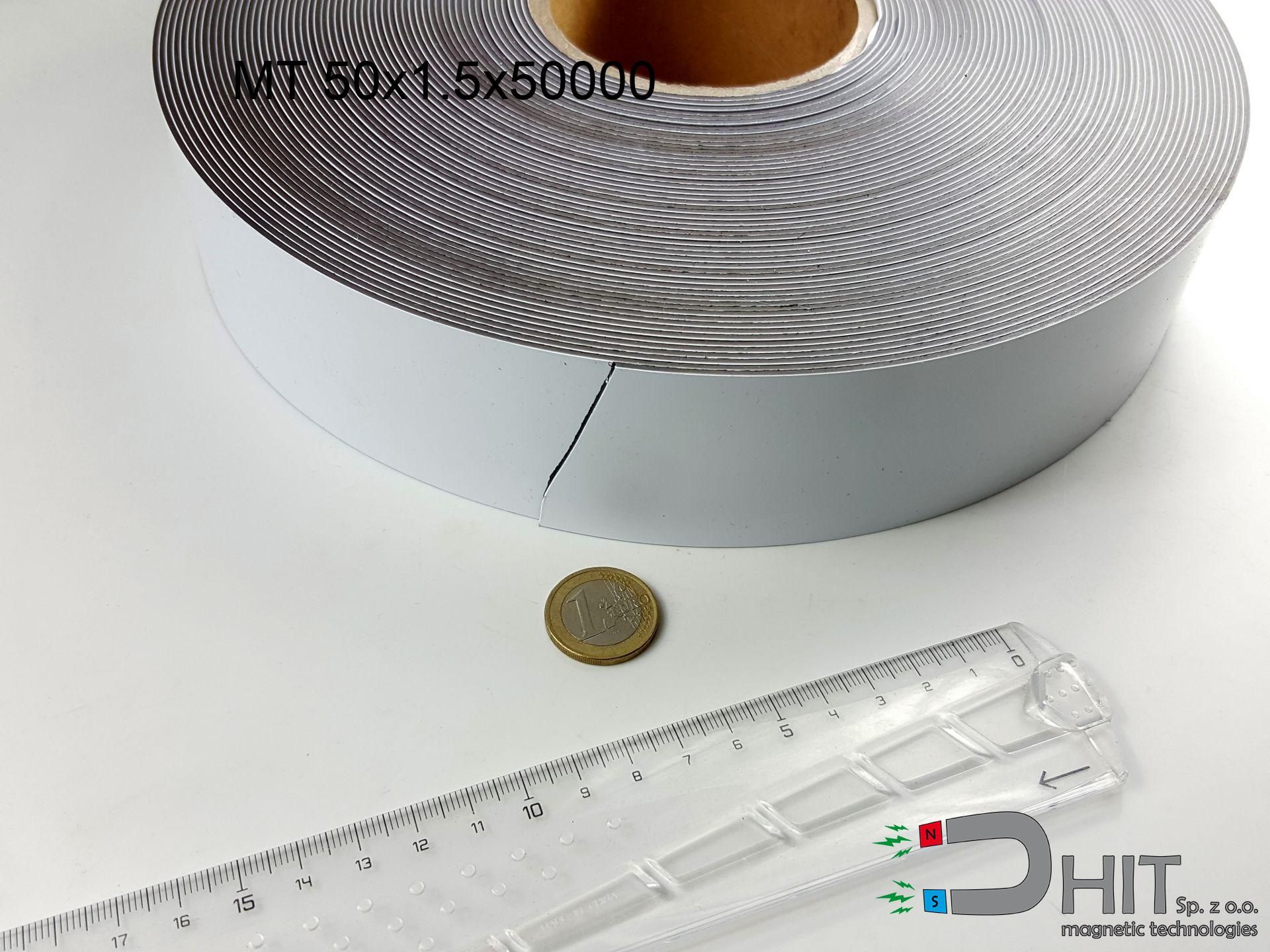SM 19x225 [2xM6] / N50 - magnetic separator
magnetic separator
Catalog no 130241
GTIN/EAN: 5906301812708
Diameter Ø
19 mm [±1 mm]
Height
225 mm [±1 mm]
Weight
0.01 g
Magnetic Flux
~ 12 000 Gauss [±5%]
492.00 ZŁ with VAT / pcs + price for transport
400.00 ZŁ net + 23% VAT / pcs
bulk discounts:
Need more?
Call us now
+48 888 99 98 98
alternatively drop us a message by means of
contact form
the contact form page.
Lifting power as well as shape of magnetic components can be calculated with our
modular calculator.
Same-day shipping for orders placed before 14:00.
Product card - SM 19x225 [2xM6] / N50 - magnetic separator
Specification / characteristics - SM 19x225 [2xM6] / N50 - magnetic separator
| properties | values |
|---|---|
| Cat. no. | 130241 |
| GTIN/EAN | 5906301812708 |
| Production/Distribution | Dhit sp. z o.o. |
| Country of origin | Poland / China / Germany |
| Customs code | 85059029 |
| Diameter Ø | 19 mm [±1 mm] |
| Height | 225 mm [±1 mm] |
| Weight | 0.01 g |
| Material Type | Stainless steel AISI 304 / A2 |
| Magnetic Flux | ~ 12 000 Gauss [±5%] |
| Size/Mount Quantity | 2xM6 |
| Polarity | circumferential - 12 poles |
| Casing Tube Thickness | 0.5 mm |
| Manufacturing Tolerance | ±1 mm |
Magnetic properties of material N50
| properties | values | units |
|---|---|---|
| remenance Br [min. - max.] ? | 14-14.6 | kGs |
| remenance Br [min. - max.] ? | 1400-1460 | mT |
| coercivity bHc ? | 10.8-12.5 | kOe |
| coercivity bHc ? | 860-995 | kA/m |
| actual internal force iHc | ≥ 12 | kOe |
| actual internal force iHc | ≥ 955 | kA/m |
| energy density [min. - max.] ? | 47-51 | BH max MGOe |
| energy density [min. - max.] ? | 374-406 | BH max KJ/m |
| max. temperature ? | ≤ 80 | °C |
Physical properties of sintered neodymium magnets Nd2Fe14B at 20°C
| properties | values | units |
|---|---|---|
| Vickers hardness | ≥550 | Hv |
| Density | ≥7.4 | g/cm3 |
| Curie Temperature TC | 312 - 380 | °C |
| Curie Temperature TF | 593 - 716 | °F |
| Specific resistance | 150 | μΩ⋅cm |
| Bending strength | 250 | MPa |
| Compressive strength | 1000~1100 | MPa |
| Thermal expansion parallel (∥) to orientation (M) | (3-4) x 10-6 | °C-1 |
| Thermal expansion perpendicular (⊥) to orientation (M) | -(1-3) x 10-6 | °C-1 |
| Young's modulus | 1.7 x 104 | kg/mm² |
Table 1: Rod construction
SM 19x225 [2xM6] / N50
| Parameter | Value | Description / Unit |
|---|---|---|
| Diameter (Ø) | 19 | mm |
| Total length | 225 | mm (L) |
| Active length | 189 | mm |
| Section count | 8 | modules |
| Dead zone | 36 | mm (2x 18mm starter) |
| Weight (est.) | ~485 | g |
| Active area | 113 | cm² (Area) |
| Housing material | AISI 304 | 1.4301 (Inox) |
| Surface finish | Ra < 0.8 µm | Polished |
| Temp. class | 80°C | Standard (N) |
| Force loss (at max °C) | -12.8% | Reversible loss (physics) |
| Force (calculated) | 6.1 | kg (theor.) |
| Induction (surface) | ~6 500 | Gauss (Max) |
Chart 2: Field profile (8 sections)
Chart 3: Temperature performance
Material specification
| iron (Fe) | 64% – 68% |
| neodymium (Nd) | 29% – 32% |
| boron (B) | 1.1% – 1.2% |
| dysprosium (Dy) | 0.5% – 2.0% |
| coating (Ni-Cu-Ni) | < 0.05% |
Environmental data
| recyclability (EoL) | 100% |
| recycled raw materials | ~10% (pre-cons) |
| carbon footprint | low / zredukowany |
| waste code (EWC) | 16 02 16 |
Other proposals
Advantages and disadvantages of Nd2Fe14B magnets.
Pros
- They retain full power for nearly ten years – the drop is just ~1% (according to analyses),
- They do not lose their magnetic properties even under strong external field,
- By applying a smooth coating of silver, the element gains an aesthetic look,
- Magnetic induction on the surface of the magnet is strong,
- Made from properly selected components, these magnets show impressive resistance to high heat, enabling them to function (depending on their shape) at temperatures up to 230°C and above...
- Thanks to freedom in shaping and the capacity to customize to complex applications,
- Wide application in future technologies – they are commonly used in computer drives, drive modules, precision medical tools, and modern systems.
- Compactness – despite small sizes they generate large force, making them ideal for precision applications
Limitations
- At strong impacts they can break, therefore we recommend placing them in strong housings. A metal housing provides additional protection against damage, as well as increases the magnet's durability.
- We warn that neodymium magnets can lose their strength at high temperatures. To prevent this, we advise our specialized [AH] magnets, which work effectively even at 230°C.
- Magnets exposed to a humid environment can rust. Therefore when using outdoors, we recommend using water-impermeable magnets made of rubber, plastic or other material resistant to moisture
- We suggest casing - magnetic mount, due to difficulties in creating threads inside the magnet and complex forms.
- Potential hazard resulting from small fragments of magnets pose a threat, if swallowed, which becomes key in the aspect of protecting the youngest. Additionally, small elements of these products can disrupt the diagnostic process medical in case of swallowing.
- With large orders the cost of neodymium magnets can be a barrier,
Lifting parameters
Maximum lifting capacity of the magnet – what affects it?
- with the application of a yoke made of special test steel, guaranteeing maximum field concentration
- possessing a massiveness of at least 10 mm to avoid saturation
- with an ideally smooth contact surface
- under conditions of no distance (metal-to-metal)
- for force applied at a right angle (in the magnet axis)
- in temp. approx. 20°C
Determinants of practical lifting force of a magnet
- Clearance – the presence of foreign body (rust, tape, air) interrupts the magnetic circuit, which lowers capacity steeply (even by 50% at 0.5 mm).
- Angle of force application – highest force is reached only during perpendicular pulling. The force required to slide of the magnet along the surface is standardly several times lower (approx. 1/5 of the lifting capacity).
- Metal thickness – thin material does not allow full use of the magnet. Part of the magnetic field passes through the material instead of generating force.
- Steel type – mild steel gives the best results. Higher carbon content decrease magnetic properties and holding force.
- Surface structure – the more even the surface, the larger the contact zone and stronger the hold. Roughness creates an air distance.
- Thermal conditions – neodymium magnets have a negative temperature coefficient. At higher temperatures they lose power, and at low temperatures gain strength (up to a certain limit).
Holding force was tested on the plate surface of 20 mm thickness, when the force acted perpendicularly, in contrast under attempts to slide the magnet the holding force is lower. In addition, even a minimal clearance between the magnet’s surface and the plate lowers the holding force.
H&S for magnets
Keep away from electronics
Remember: rare earth magnets produce a field that disrupts sensitive sensors. Maintain a separation from your mobile, device, and GPS.
Fragile material
Protect your eyes. Magnets can fracture upon uncontrolled impact, ejecting sharp fragments into the air. We recommend safety glasses.
Heat warning
Regular neodymium magnets (grade N) lose magnetization when the temperature surpasses 80°C. The loss of strength is permanent.
Powerful field
Handle magnets consciously. Their powerful strength can surprise even professionals. Stay alert and respect their force.
Sensitization to coating
Medical facts indicate that the nickel plating (the usual finish) is a strong allergen. If your skin reacts to metals, avoid direct skin contact or opt for versions in plastic housing.
Fire risk
Mechanical processing of neodymium magnets carries a risk of fire risk. Neodymium dust reacts violently with oxygen and is difficult to extinguish.
Finger safety
Large magnets can break fingers instantly. Never place your hand betwixt two strong magnets.
Warning for heart patients
Life threat: Strong magnets can deactivate heart devices and defibrillators. Stay away if you have electronic implants.
Protect data
Very strong magnetic fields can erase data on credit cards, hard drives, and other magnetic media. Keep a distance of min. 10 cm.
Adults only
Product intended for adults. Small elements can be swallowed, causing severe trauma. Store out of reach of kids and pets.

![Magnetic bar SM 19x225 [2xM6] / N50 Magnetic bar SM 19x225 [2xM6] / N50](https://cdn3.dhit.pl/graphics/banners/magnet.webp)
![SM 19x225 [2xM6] / N50 - magnetic separator](https://cdn3.dhit.pl/graphics/products/sm-19x225-2xm6-jis.jpg)



![UMGW 75x33x18 [M10] GW / N38 - magnetic holder internal thread UMGW 75x33x18 [M10] GW / N38 - magnetic holder internal thread](https://cdn3.dhit.pl/graphics/products/umgw-75x33x18-m10-gw-cak.jpg)

